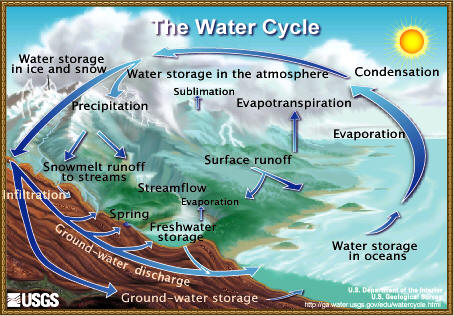How does the water cycle change, based on what biome we're talking about?
1 Answer
Depending on the biome in question, the rates of certain steps of the cycle may change and reservoirs of water may change.
Explanation:
Depending on the biome in question, the rates at which certain steps of the water cycle (transpiration, precipitation, etc) may change. Where water is stored my also change.
Water cycle:

For example, in a rainforest biome, we wouldn't expect water to be stored in glaciers or ice. It's simply too hot for this. However, we would expect water to be stored in glaciers and/or ice in a montane biome.
The length of time the water is stored there may vary depending on conditions: in some habitats we may expect temperatures to climb high enough that any ice covering mountain tops melts during the warmer months, but this may not be true in other habitats.
In the biomes where there is little (or even no) vegetation, less water will be returned to the atmosphere via transpiration than in more heavily vegetated biomes.
Water cycle in the arctic:
The rate at which water percolates or infiltrates the soil may also change depending on the biome as will runoff rates, precipitation rates, the rate at which water is stored as groundwater, and evaporation. Different biomes receive different amount of precipitation, different amounts of sunlight, have different soil types and topography, and all of these variables will affect the water cycle and the rates certain processes occur.

